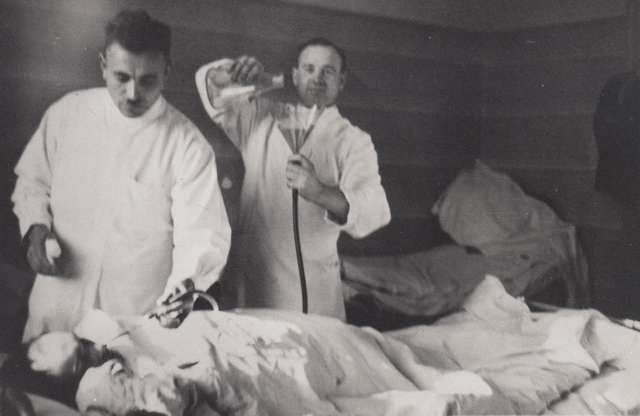Therapy
In the 1930s, psychiatrists developed new therapies that were intended to target the mind via the body. Insulin treatment was used for the first time in Vienna in 1933. The doctors used these means to put psychiatric patients into a diabetic coma and then »awakened« them again with a sugar solution. The Cardiazol treatment was developed by psychiatrist Ladislaus J. Meduna in Budapest in 1934. He produced artificial seizures which were intended to act therapeutically with the circulatory drug called Cardiazol. Electroconvulsive therapy (ECT) was first used in Italy in 1938. It used electrical impulses to trigger an epileptic seizure in patients. ECT soon replaced treatment with Cardiazol and insulin: it was easier to perform and less expensive.
These therapies also spread to German institutions. They were very painful for patients and were associated with the risk of physical harm. Some relatives and patients nevertheless hoped for an improvement. The new means reinforced, above all, the therapeutic claim of the psychiatrists and the hope of being able to finally heal mental illness.
The medical department of the T4 supported the implementation of therapies and the furnishing of the institutions with ECT devices. The T4 registration form queried the use and success of new treatments. Under National Socialism, the reverse of the new treatment possibilities was the annihilation of »incurable« patients.

© Heiner Wittrock